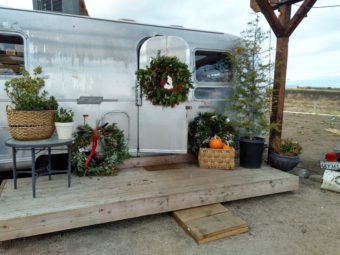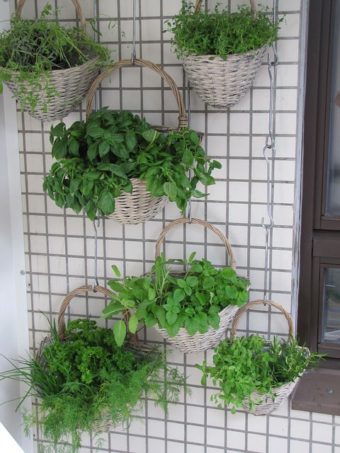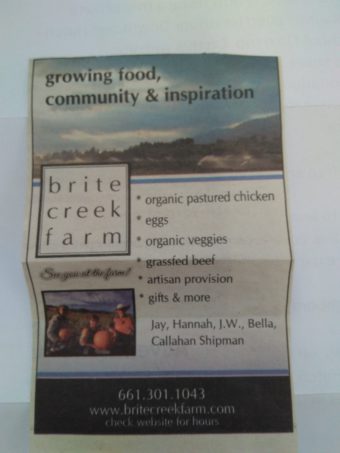Image by Reija Hirvonen from Pixabay
Healthy Food Near Me – Farm To Table Or Home Grown
I was lucky to discover a source of healthy food near me recently. I had become interested in the farm to table movement in food acquisition.
I started a habit of reading the entire city newspaper (it’s small!) every week, and kept an eye out for fresh food sources.
Because I want to stay my healthiest in retirement – and you do too, don’t you?
One aspect of success in having a work at home job as a senior, is health. And aspects of health are:
- Good sleep
- Exercise appropriate for your age and general condition
- Good fresh food with no chemicals and bad fats to increase our inflammation levels
- Good company including pets if you can have one
What Is The Farm To Table Process?
” Farm-to-table (or farm-to-fork, and in some cases farm-to-school) is a social movement which promotes serving local food at restaurants and school cafeterias, preferably through direct acquisition from the producer (which might be a winery, brewery, ranch, fishery, or other type of food producer which is not strictly a “farm”).- Wikipedia
What Does The Farm To Table Food Network Hope To Accomplish?
- Provide optimal health and nutrients to communities and decrease the risk of diseases that are related to diet
- Introduce seasonal foods that are produced locally
- Offer a healthy diet and fresh food to all members of a community
- Create a direct connection between those who farm the food and those who consume it
- Help the environment and the community by alleviating the need for the transportation of food from other states or countries
- Encourage the public to participate in the promotion of local food and community
- Help strengthen local businesses so that the communities can grow financially and monetary funds can circulate
That list is from Eco Caters
Can The Farm To Table Food Trend Help You To Stay Healthy?
It can, absolutely, yet here is where my farm to table food ideas departs somewhat. I’m talking about food going from a farm to your table, directly.
If the produce is local, it should be less expensive, right? And a lot of it is.
But first, what’s in your local stores? Buying organic foods at super markets is expensive, generally.
You can explore your local stores and check the pricing. Go to the store manager and ask them what the most local produce is. Just be friendly and be sure to thank the person for their time.
In one of my local markets there is a bulk section. I discovered that organic steel cut oats are half the price of non-organic Quaker and other brand oats. Nuts and mixes are also cheaper than the same packaged produce.
Check out the local farmers market. The fresh produce isn’t always organic, but one thing you can count on – it’s fresh!
There are special washes you can buy to rinse off food sprays. Hot water and vinegar will rinse off sprays and shellacs too.
Visit the Local Harvest site and see where you can shop or order food online.
How Can I Eat Healthy And Cheap?
Need some healthy food ideas?
First, think of fresh, unprocessed foods.Foods like:
- Vegetables
- Salads
- Nuts
- Eggs
- Dairy
- Meats/fish
Canned foods and cartons of vegetable/chicken/beef broths are great to have in the cupboard for back ups when you get snowed in, or otherwise blocked from shopping for fresh produce.
For daily meals, plan to eat at home, and make meals as you go, or bag and freeze portions while fresh.
Bear in mind, I am talking to seniors here, not families. If you are a senior living with a family, all the better! However, it seems many seniors live alone or in a couple.
I am also considering in this article, that many seniors are living on a pretty low income. So you need some thought to get a food budget drilled down. A budget that will provide for fresh healthy foods.
My lucky find was:
You can click on the photo of the Brite Creek Farm ad to see the website.
Being able to buy fresh eggs and pasture raised beef is is a huge boost for getting healthier food in my diet. I can get grass fed beef in the grocery store, but it is from New Zealand and Canada (not specified per package) and how can I tell how long the shipping took? I really don’t know. The Brite Creek Farm beef is frozen fresh, in small batches.
Works for me!
I would hope you can find such a source. The ground beef is $6.99 a pound. Broken down to 1/4 pound in a meal, it is way cheaper than the fast food/frozen with additives/processed on feed lot/from South America which is burning down the rain forest to pasture beef…You get my argument right?
If you live in a big city, find the nearest rural centered small town, and check their newspaper. There are two adds for fresh eggs in my area, and once I drove around I saw several other signs for eggs.
I found another farm selling fresh apples, pears, both in several varieties. They were one third less in price than the local super markets. Because they don’t have to be shipped, right?

The following contributed article gives some good ideas if you will consider growing your own food, in a limited space.
Container Vegetable Gardening Basics by Larry L. Taylor
Gardening can be a lot of fun, but for those who do not have a yard or sufficient space to spread out, container gardening is a great alternative. Not only is container vegetable gardening easy for beginners to pick up, it’s also possible to grow a large variety of vegetables in a container garden.
In order to grow a successful container garden, there are a few basic tips that can help you get started. Most vegetables require six hours or more of sunlight every day. Ensure that there is a place where the vegetables can be placed where they will be warm and receive a lot of sunlight. If living in an area where there is a lot of sunlight, you might have to add some shade in order to protect them.
In addition to sunlight, vegetables also need to be watered constantly. During their peak growing time, the soil in the container should be moist to the touch, although not dripping. Adding too much water will cause the roots to rot while not enough water will stunt their growth. Test the moisture levels in the soil every day by sticking your finger in.
Temperature is an important part of maintaining a garden. When it starts to get cold outside, the vegetable containers should be brought inside since freezing temperatures can kill them. If the containers are too large to make moving easy, it is possible to use a garden fleece to protect them.
When choosing a container for the vegetable garden, the sky is the limit. you may want to use traditional garden planters and pots which are well-ventilated. The wooden ones are decorative and can look very nice on a patio or a balcony. For a non-traditional container choice, think outside the box and even consider making your own. Remember that any container must have some sort of drainage system. The container should have a small hole in the bottom so that excess water won’t build up. Each container should have one hole that’s larger as well as several small ones.
If you travel a lot or don’t have much time to water the vegetables, consider self-watering containers. However, you will need to make sure that any excess water has space to be poured away. Plastic, ceramic, and terracotta are some of the more popular choices.
Once you’ve chosen the containers for the vegetables, fill them with a potting soil. Buy prepared potting soil from a gardening store to get the best results. Also, be sure to pick up some garden fertilizer to promote the health of your vegetables. After filling the containers, start to plant vegetables. You can either plant seeds or young plants, although beginning gardeners usually have better results with young plants.
The sky is the limit as far as vegetable choices, but some of the easiest vegetables to grow are peas, tomatoes, carrots, lettuce, zucchini, and radishes. If you have a long planter, you can also grow beans or other vegetables which need room to spread out.
Container gardening is a great option for the avid gardener who may not have room for a traditional garden. They are an attractive addition to a patio or balcony and are a lot of fun throughout the year.
And now I would like to invite you to visit [http://www.GardenJargon.com] for FREE Instant Access to a more information on How to Container Vegetable Gardening Tips [http://www.GardenJargon.com/Container_Vegetable_Garden.html]
The author’s links are un-linked at Source.
The photo at top shows an herb garden grown vertically on a balcony.
Have you grown herbs, sprouts (easy to grow in the kitchen) or vegetables at home? Please do share your experience!
Use the comment box below.

